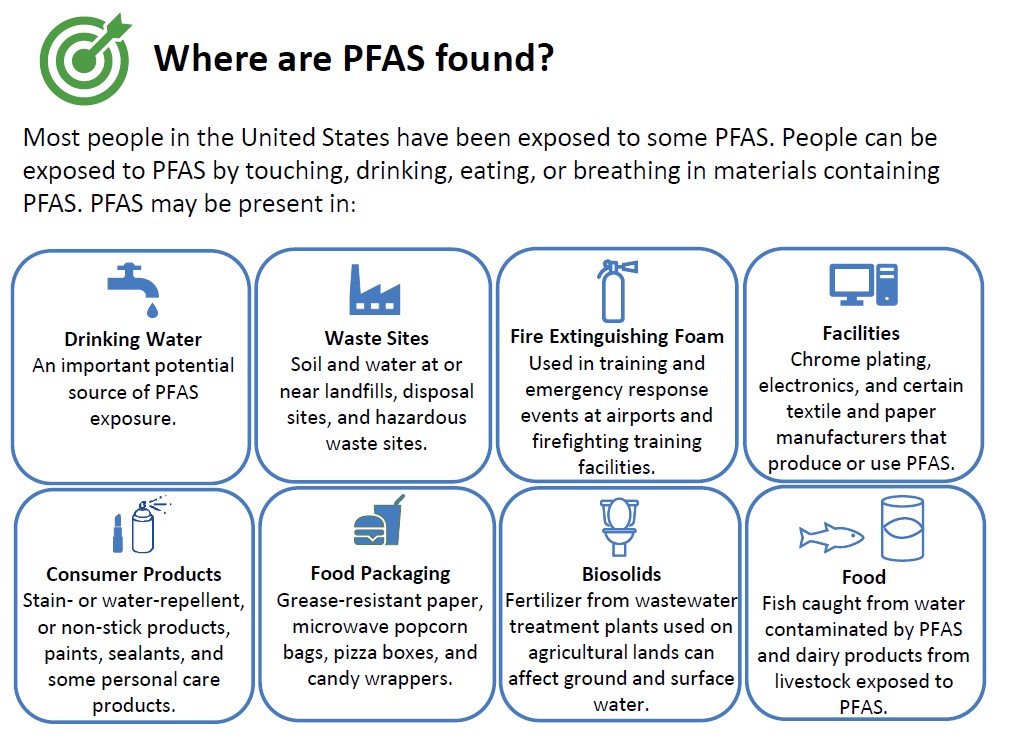Water Quality

City of Hendersonville water customers are fortunate to enjoy an abundant water supply from three sources with a fourth source coming online in 2024. The city currently draws water from the Mills River watershed from two intakes located within Pisgah National Forest and a third intake from the main stem of the Mills River. Hendersonville is currently constructing a fourth water source on the French Road River that is expected to be online in 2024 to improve resiliency and serve future water demands within the city's water service area.
What are PFAS?
Per- and polyfluoroalkyl (PFAS) substances are man-made chemicals that have been manufactured and used in many common industry and consumer products since the 1940s.
PFAS have been detected worldwide in the air, soil, and water. Due to their widespread use and persistence in the environment, many PFAS are found in the blood of people and animals all over the world. PFAS remain in the environment for a very long time, earning them their nickname "forever chemicals.” The EPA has determined there is evidence that continued exposure above specific levels to certain PFAS may cause adverse health effects.
Water utilities are “passive receivers” of PFAS. They do not produce or manufacture PFAS. Instead, these chemicals can be present in source waters that are treated to produce drinking water.
Where are PFAS found?
PFAS were originally used in products to help with waterproofing, and to resist heat, oil, stains and grease. Manufacturers use thousands of different types of PFAS in consumer and industrial products. Common examples include non-stick cookware, coatings on some food packaging, components of fire-fighting foam, personal care products and much more.

View how PFAS cycle through the environment from an American Water Works Association infographic
Regulatory Requirements
Providing clean, safe drinking water and protecting the health of the community and environment is Hendersonville Water and Sewer’s core mission. The utility regularly tests its water to ensure water quality meets or exceeds all Federal and State regulations and closely follows the emerging research regarding drinking water and public health.
On April 10, 2024, the United States Environmental Protection Agency (EPA) released drinking water standards for six per- and polyfluoroalkyl substances (PFAS). The EPA's final rule requires public water systems to complete initial monitoring by 2027 followed by ongoing compliance monitoring.
In 2019, as a proactive measure, Hendersonville participated in a state-wide testing event to identify drinking water sources which contained PFAS. The testing was facilitated by Duke University, University of North Carolina at Chapel Hill, and NC State University. PFAS was not detected in any of the three source waters currently used for Hendersonville’s drinking water supply.
Since then, Hendersonville has begun construction of a fourth water source on the French Broad River for drought resiliency and to lay the foundation for the future water needs of the community. Samples collected on the French Broad River just upstream of the Hendersonville’s new water source have found extremely small amounts of PFAS that are well below the EPA’s new drinking water standards.
The City of Hendersonville will sample for PFAS in drinking water to comply with the new drinking water regulations and to ensure protection of public health.
Where can I learn more about PFAS?
Mountains on Tap
Branding tap water is becoming increasingly popular as a way to increase consumer confidence in the safety and quality of municipal water supplies. This trend is driven by a growing concern for the environment, as well as the rising cost of bottled water. Hendersonville's decision to brand its tap water as "Mountains on Tap" not only promotes the quality of its water source but also educates consumers about the affordability of tap water. By showcasing the natural beauty of the mountains of western North Carolina as the source of their tap water, Hendersonville is creating a unique and memorable brand that can help attract visitors and promote the city's water resources.
